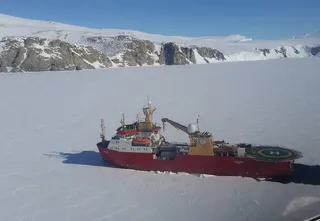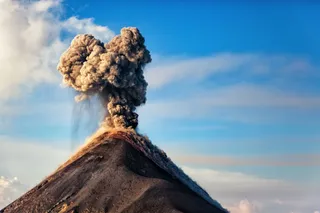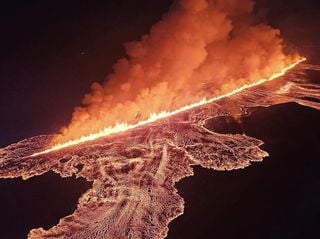A new study on ancient volcanism says dinosaurs would have thrived after cold periods not warm
A new study describes how ancient volcanism would have affected global temperatures and what this meant for ancient animals such as dinosaurs and mammals.
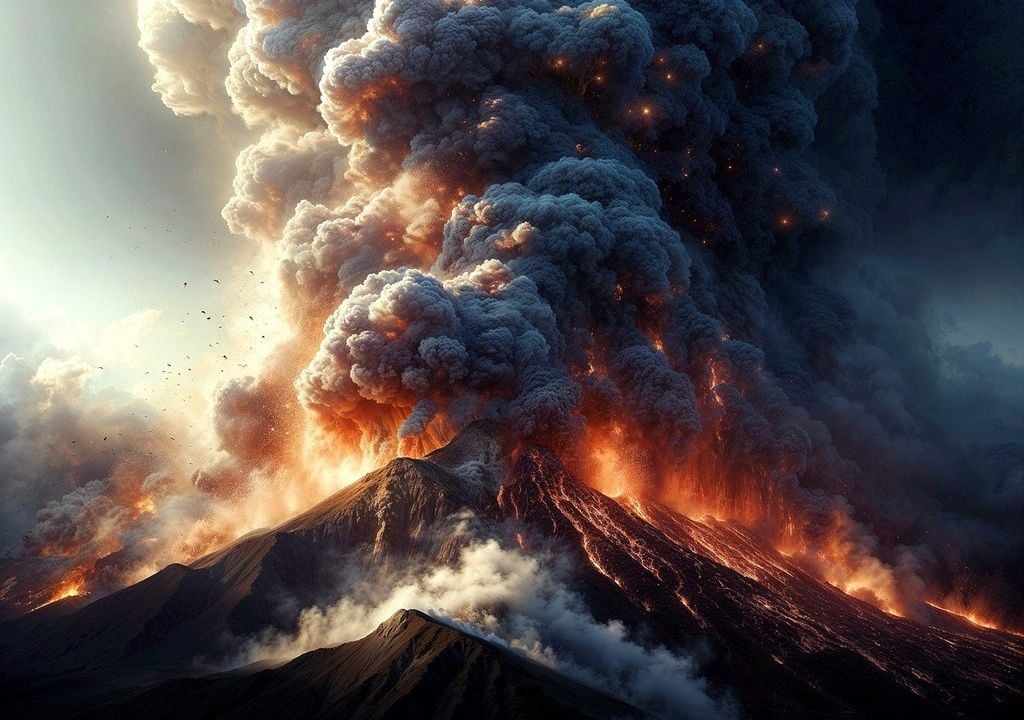
Mass Extinction debate
201.6 million years ago, a catastrophic mass extinction event took place, wiping out three-quarters of all living things on Earth. The extinction event occurred at the same time massive volcanic eruptions split Pangea apart – the supercontinent comprising almost all of the planet’s land. Over 600,000 years millions of cubic miles of lava erupted, which separated what is now known as America, North Africa and Europe. This event marks the end of the Triassic period and the start of the Jurassic Period.
The exact cause of the End Triassic Mass Extinction has been debated for many years, but one of the most discussed theories is that Carbon dioxide produced by the eruptions built up over many millennia, causing temperatures to rise to a point that most animals could not tolerate and acidifying the oceans.
However, a new paper published in Proceedings of the National Academy of Sciences, thinks that the cold not warmth would have been the main culprit. The new study reveals evidence that instead of covering hundreds of thousands of years, the first pulses of lava that ended the Triassic lasted less than 100 years each. In this time frame, sulphate particles that reflect sunlight would have been thrown into the atmosphere, cooling the temperature and freezing its inhabitants. A hot atmosphere which then gradually became hotter – atmospheric carbon dioxide during the late Triassic was three times today’s level – could have been problematic, but it was the cold winters that would have caused the most damage.
"Carbon dioxide and sulphates act not just in opposite ways, but opposite time frames," said lead author Dennis Kent from the Columbia Climate School's Lamont-Doherty Earth Observatory. "It takes a long time for carbon dioxide to build up and heat things, but the effect of sulphates is pretty much instant. It brings us into the realm of what humans can grasp. These events happened in the span of a lifetime."
The Triassic-Jurassic extinction has been connected to the eruption of the Central Atlantic Magmatic Province, or CAMP. In 2013, Kent and their colleagues found the most definitive link. Kent studies palaeomagnetism and identified a consistent polarity reversal in sediments below the CAMP eruptions, which suggests that they happened at the same time across the world. Their colleagues used radioactive isotopes to date when the volcanism started, which was around 201,564,000 years ago. Researchers cannot say how large the initial volcanic eruptions would have been, but they assume that the CAMP deposits would have taken many millennia to build.
In the new study, Kent and their colleagues correlated data from CAMP deposits from the mountains of Morocco, Nova Scotia’s Bay of Fundy and New Jersey’s Newark Basin. The key evidence they discovered was the alignment of magnetic particles in the rocks which showed the drifting of the Earth’s magnetic pole during the volcanic eruptions. This pole is offset from the planet’s unchanged axis of rotation (true north), which changes position by a few tenths of a degree every year. This phenomenon causes magnetic particles in lavas which were emplaced within a few decades of one another should all point in the same direction. But, ones emplaced thousands of years later would point 20-30 degrees in a different direction.
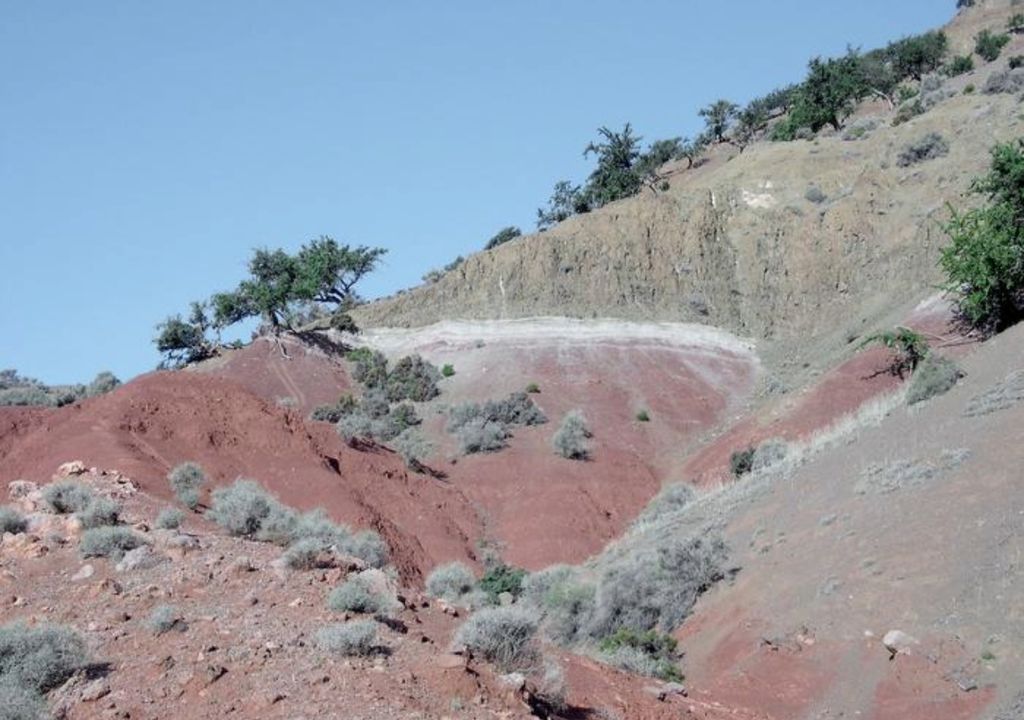
Volcanic activity caused cold period
The team discovered that five initial successive CAMP lava pulses were spread over 40,000 years, each with magnetic particles aligned in only one direction. This shows that the lava pulse would have emerged in 100 years or less before the drift of the magnetic pole could manifest.
During the volcanic activity, so much sulphate was thrown into the air in huge quantities it blocked out most of the sun, causing the temperatures to plummet. Carbon dioxide stays for centuries, whereas volcanic sulphate aerosols can ‘rain out’ of the atmosphere within years making colder conditions only last a short period. However, these volcanic winters were devastating because of how large the eruptions were and how many there were in such a quick amount of time. The team compared the CAMP series to sulphates from the 1783 Laki Volcano eruption in Iceland, which ended in widespread crop failures – and the initial CAMP pulses would have been hundreds of times greater.
Triassic fossils of large, terrestrial and semiaquatic crocodile relatives, tree lizards, tropical plants, and giant amphibians can be found in the sediments below the CAMP layers. These fossils then disappear with the CAMP eruptions. Small feathered dinosaurs though survived, and eventually thrived and grew much larger, along with true lizards, mammals and turtles. This could have been due to their small size and the ability to survive by hiding in burrows.
"The magnitude of the environmental effects are related to how concentrated the events are," said Paul Olsen, a palaeontologist at Lamont-Doherty. "Small events spread out over [tens of thousands of years] produce much less of an effect than the same total volume of volcanism concentrated in less than a century. The overarching implication being that the CAMP lavas represent extraordinarily concentrated events."
Source of the news:
Kent, D.V., Olsen, P.E., Wang, H., Schaller, M.F. and Et-Touhami, M. (2024). Correlation of sub-centennial-scale pulses of initial Central Atlantic Magmatic Province lavas and the end-Triassic extinctions. Proceedings of the National Academy of Sciences, 121(46).
doi:https://doi.org/10.1073/pnas.2415486121.





